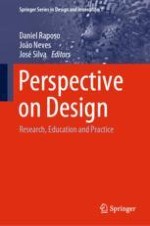
2020 | OriginalPaper | Chapter
Why Design Schools Should Take the Lead in Design Education
Author : Jan Eckert
Published in: Perspective on Design
Publisher: Springer International Publishing
Activate our intelligent search to find suitable subject content or patents.
Select sections of text to find matching patents with Artificial Intelligence. powered by
Select sections of text to find additional relevant content using AI-assisted search. powered by